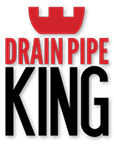Not all water jetters are the same
What is a water jetter?
A drain jetter or jet rodder is a petrol or diesel powered motor with a pump attached, allowing it to output high pressure water. The key to its success is that it is attached to various lengths of hoses and nozzles that are able to clean the line out effectively.
Types of nozzles for jet rodders
There are a whole range of nozzles available to use with a water jetter. Most plumbers will only buy one or two nozzles as they believe these will do everything, however this is not the case. Sometimes, more than one nozzle will be required for the same job as they have different purposes and strengths. See below examples of some different nozzles for different jobs:
- Grease ball nozzle – used for tough grease blockages
- Cutting nozzle – great for large tree roots
- Flushing nozzle – all the jets shoot out the back which means it is able to flush the pipe clean if coming from downstream (from the sewer connection up towards the house).
- Reverse nozzle – able to flush any blockages back towards the council line, cleaning everything perfectly
- Penetrating nozzle – will initially get through the blockage, allowing any water to drain out
A nozzle that has forward facing jets is able to cut through the blockage. Therefore the more forward facing jets, the quicker the obstruction can be penetrated. Water jets which face backwards are able to flush the line clean as there’s more power flowing downstream to do this. There are also varying sizes of water jetter nozzles which are suited to different pipe sizes. A large double barrel nozzle will clean a larger pipe, whereas a single barrel nozzle is better for smaller pipes. Using a smaller nozzle on a larger pipe is going to take a lot more time which costs you more money.
Using more than one jetter nozzle on the same job
Because tree roots grow on different angles, more than one nozzle may be required to shoot the water out at the correct position to cut through all the tree roots properly. This is where the camera comes in quite handy. The plumber is able to see exactly which way the tree roots are growing, which will determine what type of nozzle they will use. If the plumber only has one or two nozzles, it may take them longer to complete the job because they don’t have the correct equipment to remove the obstruction quickly.
Different nozzles also have various flows. If the plumber has a smaller nozzle, they can initially punch a hole through the blockage which will allow any built up sewer water in the line to drain out. This is important in minimising damage to your home, so that the pressure of backed up raw sewer does not surge into your house.
Using the right water jetter for the job
In order to understand how our jetters are able to cut through tree roots, we have done a demonstration with timber which can be found on our home page. They can go up to 5000psi which is strong enough to chop through 12mm plywood in 30 seconds with a warthog nozzle attached. A root ranger nozzle will cut through the same piece of plywood in around 10 seconds.
The video demonstrates the importance of having the right jetter for the job. Although you wouldn’t need more than 5000psi inside a residential PVC pipe, using only 3000psi output is a waste of time.
Remote control access for the water jetter
Our jetters are powered by remote controls – this makes it quicker and safer. Without remote control access, plumbers need to run backwards and forwards to their vehicles to turn the machine on and off which is time consuming. Our jetter cables are mounted in the van which means we can take the end of the cable and pull it quickly to the entry point of the pipe. Van mounted cables can usually save up to 30 minutes of time you are paying for because the cable reels do not have to be lifted on and off the truck and carried to the location or rolled up by hand.

